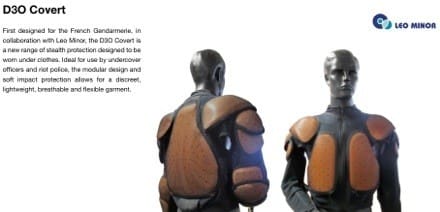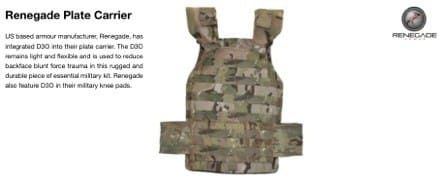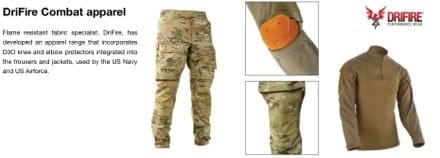We’ve mentioned D3O several times recently and thought it would be a good idea to explain what it’s for those of you who are unfamiliar.
D3O is used in 5 core markets including motorcycle, PPE (law enforcement, military, industrial workwear), electronics (phone, tablet, laptop casing), footwear and sports.additionally, they have recently developed a helmet liner system for the baseball market with Schutt Sports and plan to roll out new military helmet liner systems to the later this year.
Some further examples of its use in the PPE market include:
This impact protection undergarment from French firm Leo Minor.
Renegade Armor has incorporated D3O into select armor carriers.
And the elbows and knees of DRIFIRE FR clothing accept D3O inserts.
As for the actual material used for D3O, it’s a composite of a dilatant and polymers. How it works is based on non-newtonian principles. In standard conditions the molecules flow freely, but on impact, lock together to absorb and dissipate the impact energy. After the impact, the material instantly returns to its soft and flexible state. D3O is strain-rate sensitive, which means the stronger the impact, the more the molecules react.
An introduction to D3O in the Military sector – Soldier Systems from D3O Lab on Vimeo.
Thanks to D3O for the video.
Tags: D3O





This stuff making it’s way back again? Let me refresh everyones memory, here is the Army’s report on how horrible D3O is for use IN HELMETS.
For those too lazy to look at the link, here is a snippet from the report, page 53 but specifically the last sentence on pg 54.
“We believe the utility of this material as a helmet pad is questionable”
http://www.scribd.com/doc/53423453/PadReport-Final
I’ve never seen it used in helmets but for knee and elbow pads it is amazing.